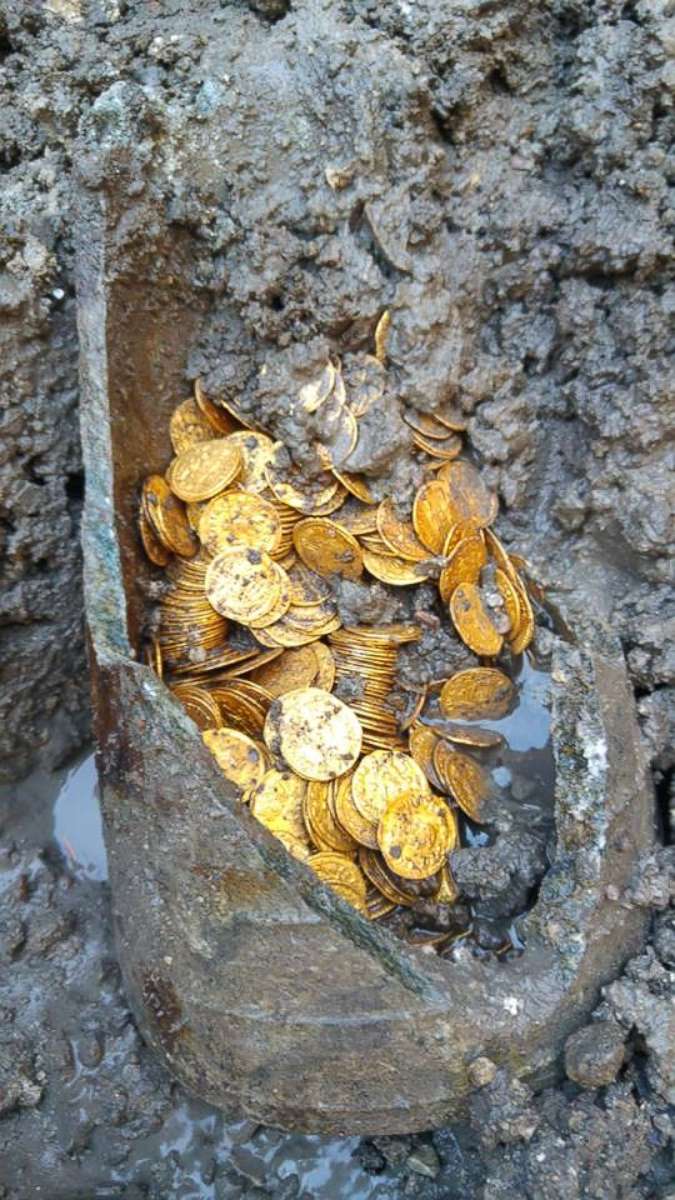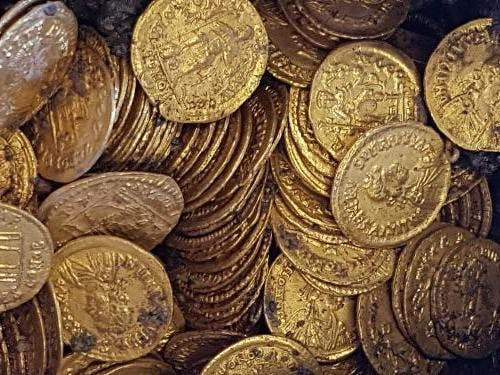Archaeologists are studying a valuable trove of old Roman coins found on the site of a former theater in northern Italy.
The coins, at least 300 of them, date back to the late Roman imperial era and were found in a soapstone jar unearthed in the basement of the Cressoni Theater in Como, north of Milan.Qing dynasty vase found in attic sells for $19 million
“We do not yet know in detail the historical and cultural significance of the find,” said Culture Minister Alberto Bonisoli in a press release. “But that area is proving to be a real treasure for our archeology. A discovery that fills me with pride.”

Whoever placed the jar in that place “buried it in such a way that in case of danger they could go and retrieve it,” said Maria Grazia Facchinetti, a numismatist — or expert in rare coins — at a Monday press conference.“They were stacked in rolls similar to those seen in the bank today,” she said, adding the coins have engravings about emperors Honorius, Valentinian III, Leon I, Antonio, and Libio Severo “so they don’t go beyond 474 AD.”

“All of this makes us think that the owner is not a private subject, rather it could be a public bank or deposit,” Facchinetti added.Archaeologists also uncovered a golden bar inside the jar.The coins were discovered last week, according to Ministry of Cultural Heritage and Activities, and were transferred to the Mibac restoration laboratory in Milan where archaeologists and restorers are examining them.

Boy unearths lost treasure of 10th century Danish kingThe ministry did not place a value on the coins. But reports in the Italian media suggest they could be worth millions of dollars.
The historic Cressoni Theater opened in 1807 before transitioning into a cinema and eventually closing in 1997. The site is not far from the Novum Comum forum area, where other important Roman artifacts were discovered, according to the ministry. The find is one of several surprising discoveries of Roman coins in recent years.

In 2016, archaeologists unearthed a rare 2,000-year-old Roman a gold coin in Jerusalem. The coin featured the face of Nero, the Roman emperor best known for playing the fiddle while Ancient Rome burned, and was likely struck in 56-57 AD.





